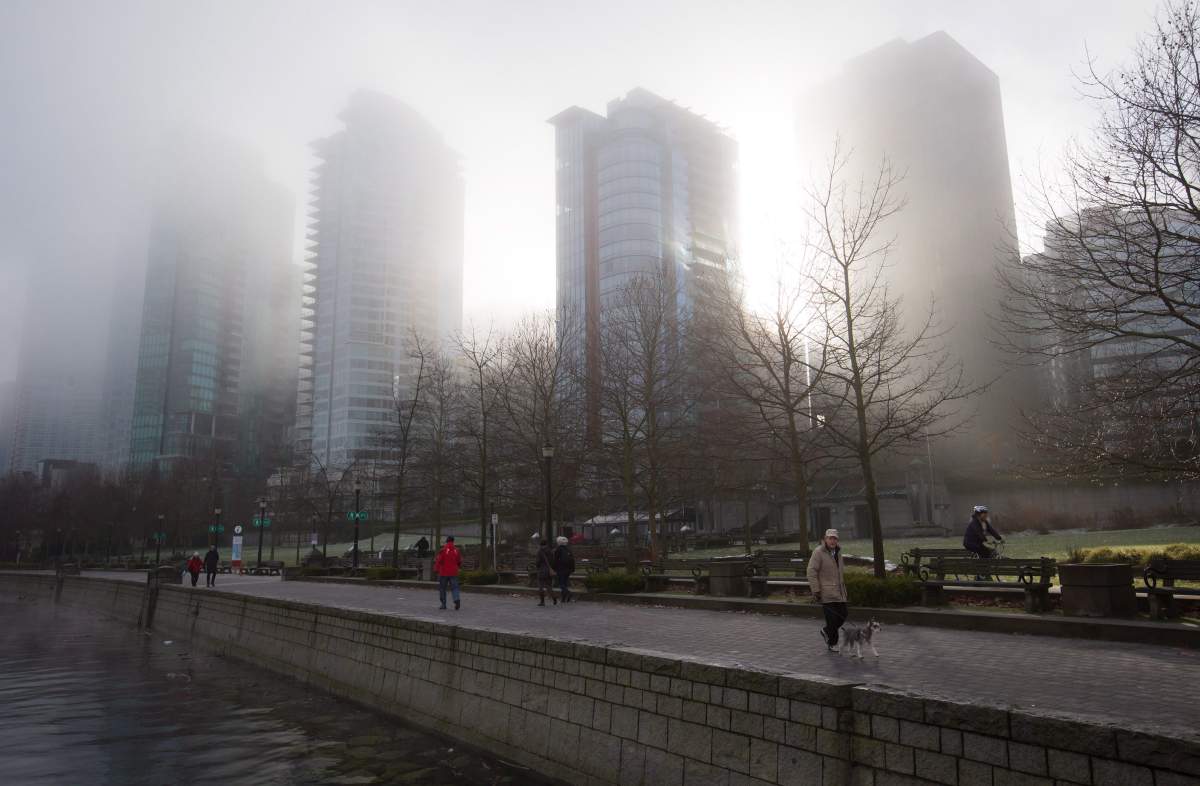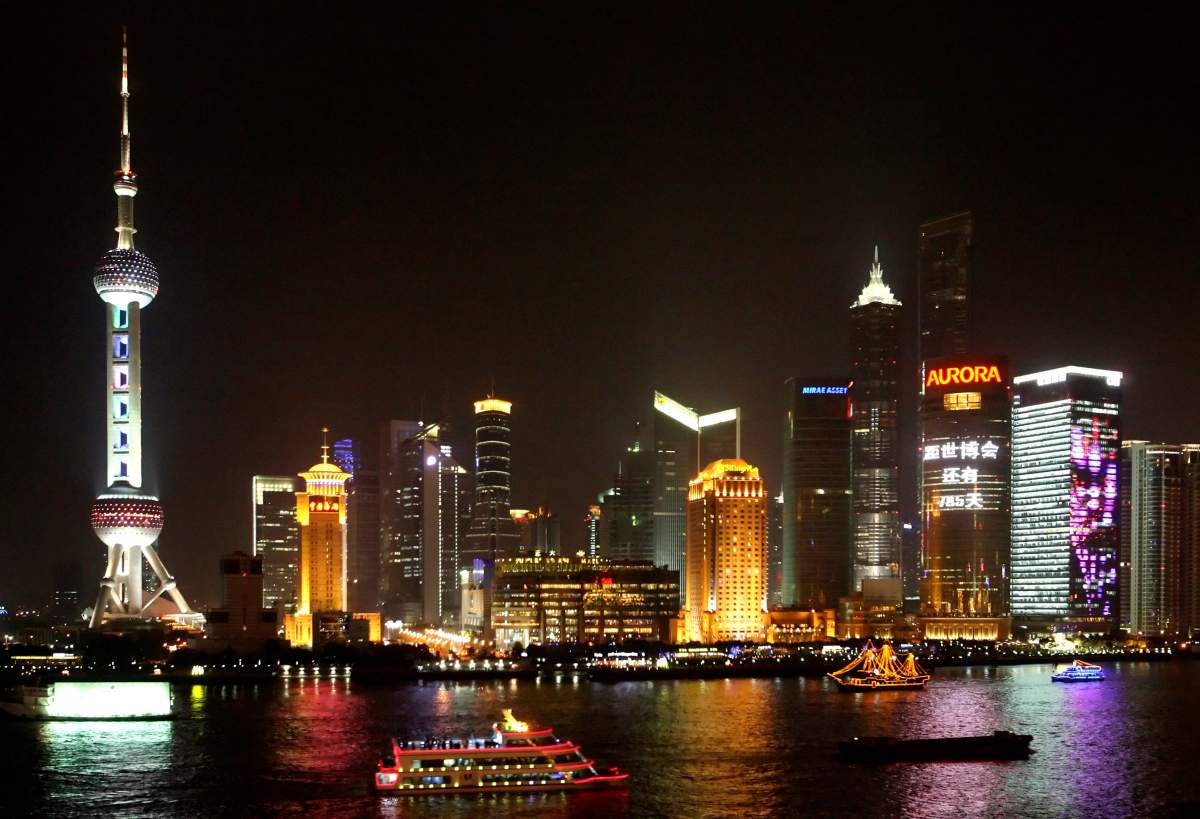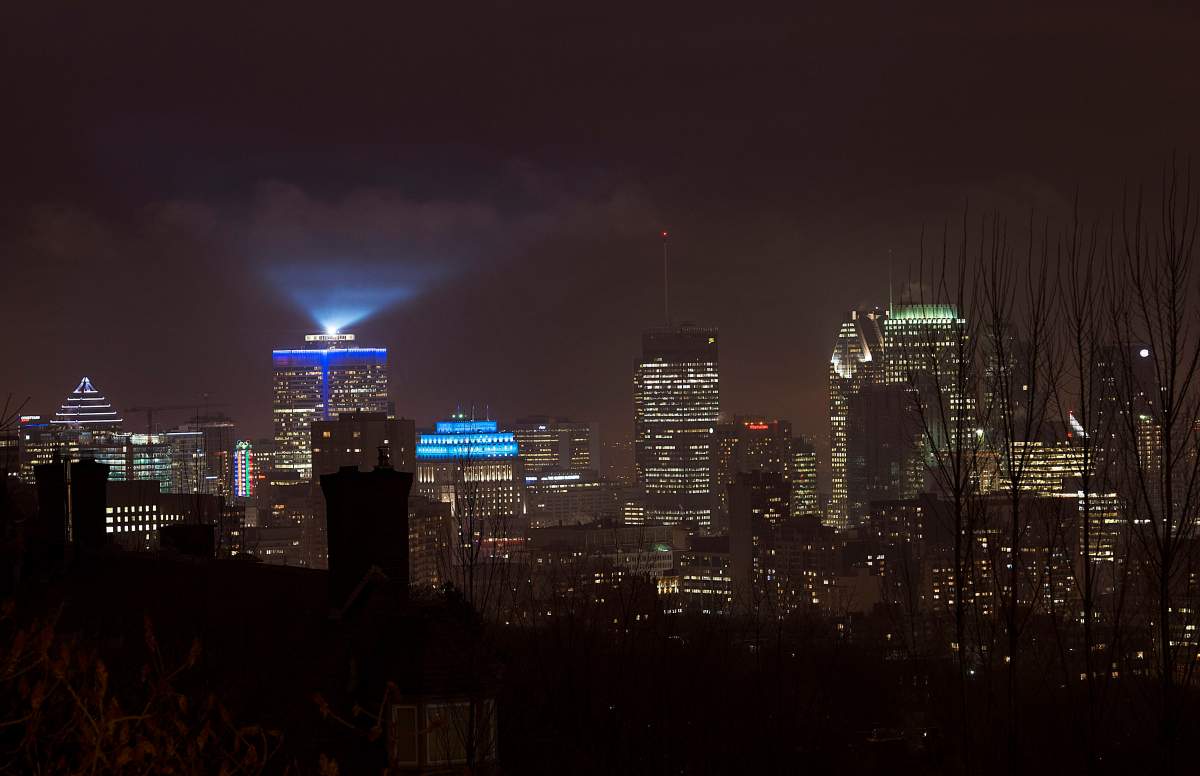Over 46,000 wealthy immigrants took a back door into Vancouver and Toronto’s housing markets over the past three decades, according to custom Census data obtained exclusively by Global News.

That back door is the Quebec Immigrant Investor Program (QIIP).
Established in 1986, it offers permanent residency to international business people with net assets of at least $1.6 million, who make an interest-free investment of $800,000 in la belle province — and the government returns their money after five years.
Applicants are supposed to settle in Quebec.
But data shows just how many of them have ended up elsewhere – leaving Quebec with their investments, other provinces with their health care bills, and cities with flows of foreign capital that have been linked to soaring home prices.
Coverage of foreign buyers on Globalnews.ca:
The data, which includes both primary and secondary applicants, showed that 57,935 investor immigrants who came through Quebec were living in Canada as of 2016.
Nearly 28,000 of them (48.3 per cent) were living in B.C., while almost 22,000 (37.9 per cent) were in Ontario.
Only 6,050 investor immigrants who came through Quebec (10.4 per cent) were living in the province at that time.
This chart shows where immigrant investors who came to Canada via Quebec were located as of 2016:
Vancouver was a major recipient of investor immigrants. The data showed 27,080 (46.7 per cent of the total) living in the Vancouver region as of 2016, with 8,590 (14.8 per cent) in the City of Vancouver, 6,835 (11.8 per cent) in Richmond and 3,160 (5.5 per cent) in Burnaby.
Meanwhile, in Ontario, there were 19,265 (33.3 per cent) investor immigrants in the Toronto area. Major destinations within that region included the City of Toronto (8,760), Markham (3,510), Richmond Hill (2,355) and Mississauga (2,060).
By contrast, there were 5,660 investor immigrants in the Montreal region, and very few in any of Quebec’s other Census Metropolitan Areas (CMA).
WATCH: Quebec’s Immigrant Investor Program criticized for housing prices

As permanent residents, no foreign buyers taxes can touch these people. Nor can any measure to curb foreign demand in Canadian real estate.
The numbers didn’t surprise Josh Gordon, an SFU public policy professor who has focused on Toronto and Vancouver’s housing markets.
“There has been kind of insider accounts that suggest this is what’s been going on,” he said of QIIP applicants settling outside Quebec.
“To have this data that confirms this should put extra pressure on governments to address this awful program.”
Gordon described the QIIP as a “farce,” saying that Quebec benefits from the program while other jurisdictions incur the costs of hosting wealthy immigrants in their provinces.
“The Quebec government receives an interest-free loan, while the house price pressures and the social service costs of supporting investor immigrant families, who have historically paid low amounts of tax, falls on British Columbia and Ontario,” he said.
A pipeline funneling foreign billions into B.C.
Estimates of where these households came from have varied over the years.
In the mid-1990s, investor immigration to Canada, which came both through Quebec and the cancelled federal Immigrant Investor Program (IIP), was dominated by applicants from Hong Kong and Taiwan.
From 2007 to 2011, the country of last residence for 86.8 per cent of principal applicants to the IIP was in Asia, Australia or the Pacific, according to a federal report.
UBC geographer Daniel Hiebert, who has focused on international migration, said investor immigration is likely now dominated by applicants from Mainland China.
The federal report also showed that investor immigrants are heavily invested in real estate.
READ MORE: Foreign buyers may not live in Vancouver, but their money sure does: StatsCan
As of 2016, there were 15,285 investor immigrant households in B.C. after they came through Quebec and the IIP.
If each household brought $1 million with them, that’s an impact of $15.285 billion over three decades.
Divide that by 30 years, and that’s an annual average of about $510 million over the life of Canada’s investor immigrant programs — a significant impact in a housing market, said UBC economist Giovanni Gallipoli.
“That’s an underestimate, because these guys bring in more than $1 million per household,” Gallipoli said.
Gallipoli did a “back-of-the-envelope” calculation to estimate the wealth that investor immigration has brought to B.C.

Get daily National news
He took the average price of a property in the area covered by the Real Estate Board of Greater Vancouver (REBGV) (about $990,000 in 2017) and average monthly sales in the same year (about 3,000).
READ MORE: Report recommends Canada revive wealthy immigrant program linked to soaring home prices
The calculation yielded about $36 billion spent on Metro Vancouver real estate in a single year.
Then he took the number of investor immigrant households.
Gallipoli assumed each of them spent $1.6 million on real estate, which was the benchmark price of a single-family home in Greater Vancouver in December 2017, according to the REBGV.
If each of these households owned one benchmark single-family home, their financial impact on the market would be just over $24 billion — an estimated 67 per cent of the Vancouver market in a single year.
But even that’s a conservative estimate, he said.
“Even if in each year, only a fraction of that money was mobilized to buy real estate, it would have a non-negligible effect on prices and inventory,” Gallipoli told Global News.
But why do so many investor immigrants who come through Quebec end up in Vancouver or Toronto?
Two successful QIIP applicants who have remained in that province have some ideas.
Mr. Ho and Mr. Zheng
Mr. Ho, a logistics professional from China’s Hebei province, came to Canada through the QIIP in 2016, after he learned about the program through an immigration company that held a conference in his hometown.
He now owns a home, a hotel and a supermarket in Montreal.
Speaking through a translator, he said language skills can be an issue for people who come through the QIIP.
It’s simply easier for applicants to live in Toronto or Vancouver, where they can manage with “simple English.” Those areas also have communities where they can speak their own languages.
Mr. Zheng, a securities professional from Shanghai, initially wanted to come to Canada through the federal IIP before it was shut down in 2014.
But when that door closed on him, another one opened through Quebec. He arrived in August 2017.
Zheng came to Canada hoping he could move his family and have his kids study here.
READ MORE: This 1989 documentary on Asian investment in Vancouver shows how little the debate has changed
Like Mr. Ho, Zheng has settled in Montreal and bought a house there, though he has yet to establish a business. And he admitted to spending a good part of the year in China.
Through a translator, he said one of the reasons why most investor immigrants settle elsewhere is that they already have friends in those cities.
He said it’s easier for many of them to fly back and forth to China from Toronto or Vancouver. Many also don’t like Quebec’s weather, he added.
The investor immigrants that Zheng knows also buy big homes — usually for their families, for a long-term stay, he said.
Conservative estimates
Research by UBC geographer David Ley shows how conservative Gallipoli’s estimates of investor immigrants’ capital were.
In his book Millionaire Migrants, Ley analyzed “total funds” that investor immigrants disclosed to prove their financial capital in the 1990s.
Ley looked at total funds held by investor immigrants from 1994 to 1997 and found that they “fluctuated between a mean level of $2.47 million in 1994 and $2.22 million in 1996” — and those numbers didn’t necessarily represent their entire net worth.
Those numbers loom large when compared against the average net worth of British Columbians and Vancouverites around that time.
Average net worth in B.C. in 1999 was $395,400, while in Vancouver it was $409,600, according to the Survey of Financial Security (SFS).
Ley derived an even larger figure when he combined entrepreneur and investor immigrants — two streams that once formed part of Canada’s Business Immigration Program (BIP).
First, he took the smallest annual record of average total funds for business immigrants between 1994 and 1997 — $2.22 million for investor immigrants, $1.2 million for entrepreneurs.
Then, he multiplied those figures by the number of principal applicants who landed in B.C. from 1988 to 1997.
From that, he estimated that $35 to $40 billion of foreign capital could have landed in B.C. in this period, with as much as $27 billion hitting Vancouver alone — and that didn’t capture the money that business immigrants held overseas.
READ MORE: Foreign buyers ‘not the problem’ in Canada, says CEO of Chinese overseas real estate portal
Ley was not available for an interview on this story.
But Hiebert said it’s likely that these “total funds” have increased, “since the vast majority use these funds to purchase a home and housing prices have risen.”
Gordon said there’s “no doubt” that programs like investor immigration help to “decouple the housing market from the labour market and make housing more unaffordable.”
He said the entry of such capital creates a “ripple effect” that begins in wealthy neighbourhoods.
“What happens is that the money arrives in the high-end neighbourhoods, which means that people who would have previously bought in those neighbourhoods are no longer able to,” Gordon said.
Then, they “bring their greater purchasing powers to second-tier neighbourhoods, and push the people who would have previously bought there out further, and so on and so forth.”
“Whatever the initial intentions, there is no doubt that these programs have facilitated the flow of wealth into real estate in Toronto and Vancouver, and that this has played a big role in the relative unaffordability of those two cities historically,” he added.
Tax impacts
The soaring cost of homes isn’t the only issue that has been tied to investor immigration.
Many investor immigrants also declare low incomes, and therefore don’t pay very much Canadian income tax, despite their wealth.
A Global News study from 2016 found that “business class” or “investor” immigrants who had spent two decades in Canada had the smallest employment income of any immigration category in 2013.
They declared lower incomes than refugees.
READ MORE: Refugees out-earn millionaire ‘business class’ immigrants years after arriving in Canada
Ley reached a similar conclusion in Millionaire Migrants: he found that investor immigrants declared average total income of $11,918 in the 1997 tax year — less than the average of $18,621 for all immigrants and refugees.
As permanent residents, they’re entitled to all the social benefits — including health care — that those taxes might pay for.
The lower tax bills were one reason why the federal government cancelled the federal immigrant investor program.
The government also said the IIP produced “limited economic benefit,” and that investor immigrants were “less likely to stay in Canada over the medium- to long-term.”
Quebec’s program, however, has continued to operate.
La belle province has set at 1,900 the maximum number of applications it expects to receive under its investor immigration program for the period of May 29, 2017, through Feb. 23, 2018.
If trends continue as they have for the last three decades (and if all those applications are accepted), that could mean just under 900 households will end up in Vancouver through the QIIP.
With net assets of at least $1.6 million each, about $1.4 billion in capital could land in Vancouver’s housing market within that time frame — and that, again, could underestimate applicants’ total funds.
The QIIP requires applicants to “intend to settle” in Quebec. But as permanent residents, they don’t have to, Quebec Immigration Minister David Heurtel said in a statement to Global News.
“Like all permanent residents and all citizens of Canada, they are free to move and settle wherever they wish,” he said.
The program is only expected to keep growing as Montreal becomes a more attractive place for international immigrants, Marc Audet, the CEO of Auray Capital, an investment dealer and a financial intermediary for the QIIP, told Global News.
But as this happens, the city might also start retaining more investor immigrants, he added.
“We have more direct flights from China for the last two years, so that’s another thing to help with their retention,” Audet said.
He said Quebec doesn’t want to ship QIIP applicants to places like Vancouver or Toronto, but sometimes, it’s difficult to keep them there for reasons such as language.
There are signs that Quebec has tackled the retention issue.
Vancouver immigration lawyer Richard Kurland told Global News that Quebec has changed its selection process for the QIIP, screening prospective applicants for ties to other provinces.
“If you have relatives elsewhere in Canada; children in school in another province; own property in another province; work in another province… don’t bother to apply,” he told Global News in an email.
Audet, meanwhile, wasn’t convinced that investor immigration had a strong effect on home prices.
He cited a Conference Board of Canada report from last year, which cited academic research showing immigrant investors were found to have “contributed to a three-per-cent increase in prices” – a finding whose methodology has been questioned.
“[The] bottom line is those guys don’t have a big impact,” Audet said.
Concerns about the QIIP have nevertheless been shared by members of B.C.’s major political parties.
In 2016, then-premier Christy Clark said she would work with Quebec’s premier to make sure that investor immigrants “spend there and stay there.”
WATCH: Quebec immigrant investor program impacts B.C. real estate

In that same year, then-BC NDP MLA, now-Attorney General David Eby said, “No matter what, extreme wealth should not put you at the front of the line for immigration.
“And no matter what, everyone needs to pay their fair share of taxes in our community.”
Now in government, the BC NDP have promised “tax changes that will affect demand” in the February budget.
In a statement, B.C. Municipal Affairs and Housing Minister Selina Robinson said, “in our upcoming budget, we will take real action to make life more affordable for all British Columbians, including by addressing domestic and foreign speculation in the housing market.”
But any measure to take on foreign demand wouldn’t apply to investor immigrants because they’re permanent residents.
While on a trade mission to China, Premier John Horgan said he wasn’t aware of any effort to try and close this back door into B.C.’s housing markets.
He said he would raise the issue with Jobs, Training and Technology Minister Bruce Ralston, who was with him on the trip.
Horgan said immigration is a “key component” of the fields that Ralston has been asked to manage, “and we want to make sure that the programs that are in place are meeting the needs of British Columbians first and foremost.”
He said he wanted to ensure that people weren’t “taking advantage” of access to Canada, or to B.C.
- With files from Richard Zussman

















Comments